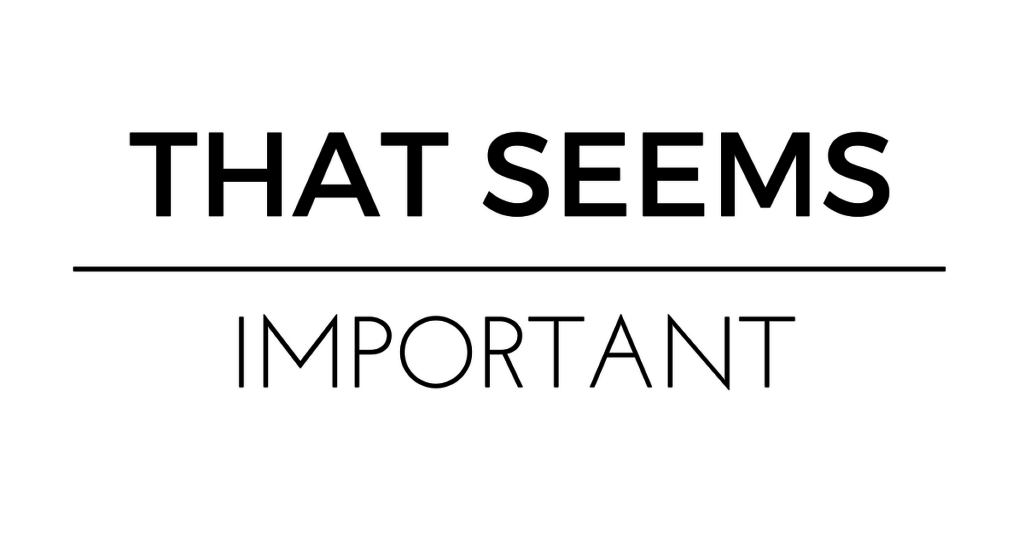We recently moved to a new city in which I have approximately two IRL friends. Those two friends thought it would be fun to play tennis. I did not.
I do not play tennis nor am I interested in learning tennis.
At my spouse’s urging to invest in new relationships (also peer pressure) I accepted the invitation and found myself on a tennis court improperly dressed (I own no pleated skirts) and holding a racket.
The first thing the instructor taught us was how to hold the racket, a skill I quickly realized I did not possess. Next, we were to bounce the “practice” tennis ball on said racket without dropping it for a minute.
I got to about…5 seconds.
The ball had a mind of its own and proceeded to bounce all over the court with me trailing along behind it, while everyone else stayed in their designated areas. I looked around trying to understand what I was doing wrong and why I was so “bad” at tennis.
I’d read The Inner Game of Tennis ~ six years ago so I knew there was a mental game here I needed to play in addition to the physical one I was failing at. That night I went home and popped open my dog-earned copy of the book and found this gem:
“The first step is to see your strokes as they are.”
Pop open page 21 of your books, students, and feast your eyes on the best lesson in quieting the self:
“Judgment results in tightness, and tightness interferes with the fluidity required for accurate and quick movement. Relaxation produces strokes and results from accepting your strokes as they are, even if erratic.”
When I first apprenticed as a copywriter under the now retired legendary, Fel Sphar, she told me I only needed to read two books to understand copy: Claude Hopkins’ Scientific Advertising and The Inner Game of Tennis. Neither of which were books about copy, so, naturally, I ignored her advice.
I bought the books and let them sit on my bookshelf for years before I finally dusted them off and cracked them open. Nice mental exercises, I thought, but I need the tactics. The CRUNCHY solutions. The answers. I was hungry for the secrets I was promised from self-proclaimed 7-figure copywriters. Yeah, yeah, mindset is important, but should I use Capital Letters or lower case ones for this headline?
Nearly a decade later and now teaching copy myself, I understand.
Knowledge of tactics is useless if you can’t see your copy as it is.
It explains why so many of us who are “good with words” are “bad with copy” — especially if you’re writing copy for yourself.
The first step is to see your strokes as they are.
We can’t see where our writing has grown defensive, antagonistic, passive, passive-aggressive, redundant, tedious, boring, or tiresome. We can’t see where we started to focus on ourselves instead of our market. We can’t see that we forgot to put a CTA. We can’t see that we’re selling something no one wants.
During tennis, I couldn’t see how my arm was holding my racket, where the ball was hitting the strings, nor how my racket was literally pointing the opposite direction I wanted the ball to go. Instead, what I saw was self-criticism and judgment. A steady stream of mental beratement, distracting me from what I actually needed to do which was be present, aware, and try again.
“Letting go of judgments does not mean ignoring errors. It simply means seeing events as they are and not adding anything to them.”
Which is precisely what Akimbo was created to help you do and why I partnered with them to bring you The Copy Workshop: a 9-week real-time cohort-based workshop that will teach you how to see your copy “strokes” as they are. You’ll learn to let go of judgments, but not ignore errors. And your writing will get stronger.
In this workshop, you will discover how to dramatically improve the results your words create.
You’ll learn:
- How to wield the power of words to inspire people to respond to your emails and click on your Facebook ads
- How to motivate your audience to buy your books, take your course, attend your concert, and read your poetry
- Why great copy is ethical, generous, and kind
- How to know if your copy is working (or if it’s “good”)
- What powerfully persuasive self-honoring copy looks like (and how to write it)
- How to write in a way that makes you feel proud to have authored such powerful prose
There are 16 lessons, 17 writing prompts, and a dedicated space for you to ship your personal copy projects. You’ll be assigned a cohort and a group-coach, so you won’t be doing any of it alone.
[Listen to Kristin Hatcher and I talk about why writing with people is the key to improving – Akimbo workshops ensure you are supported and not left writing copy alone in your bedroom, watching videos by yourself, and wondering whether you did it “right” — In The Copy Workshop you’ll practice shipping imperfect copy in a protected space with people in the arena with you.]
By the end of The Copy Workshop, you’ll feel like you actually know what you’re doing when you sit down to write copy.
The curriculum has been tried, tested, and proven over the better part of three years. And the learning experience that is Akimbo (cohort-based, participatory, and peer-supported) is unmatched in the online workshop world.
“Trying too hard to perform even a single instruction not well understood can introduce an awkwardness and rigidity into the swing that inhibits excellence.”
Don’t inhibit your excellence.
Class starts in two weeks.
– Margo
Your Copy Instructor Who Can Also Properly Hold a Tennis Racket, nbd 🎾




